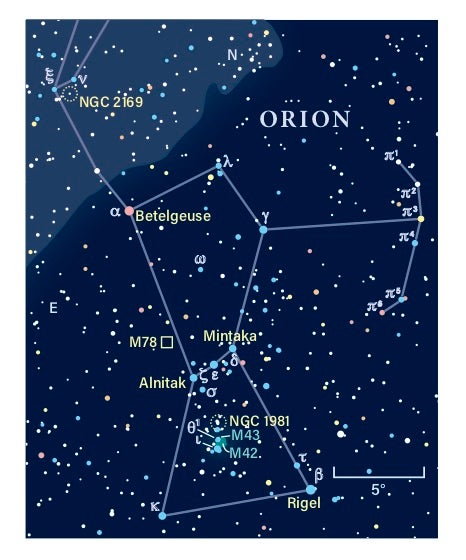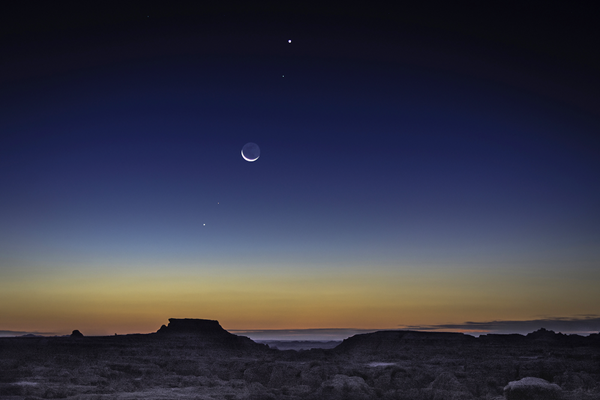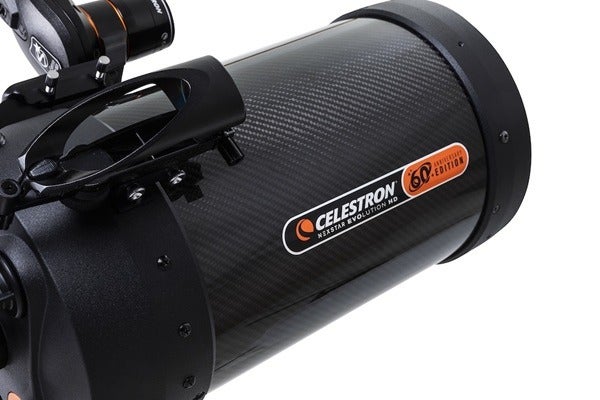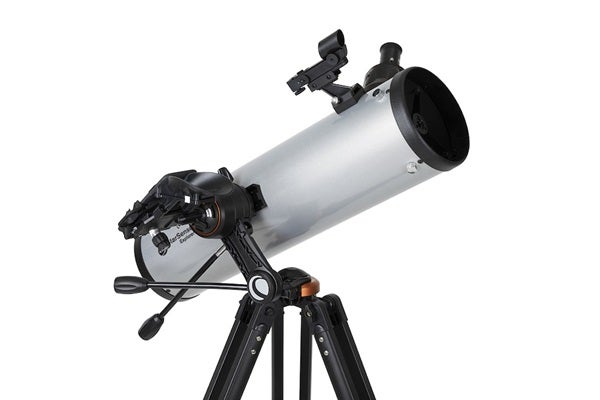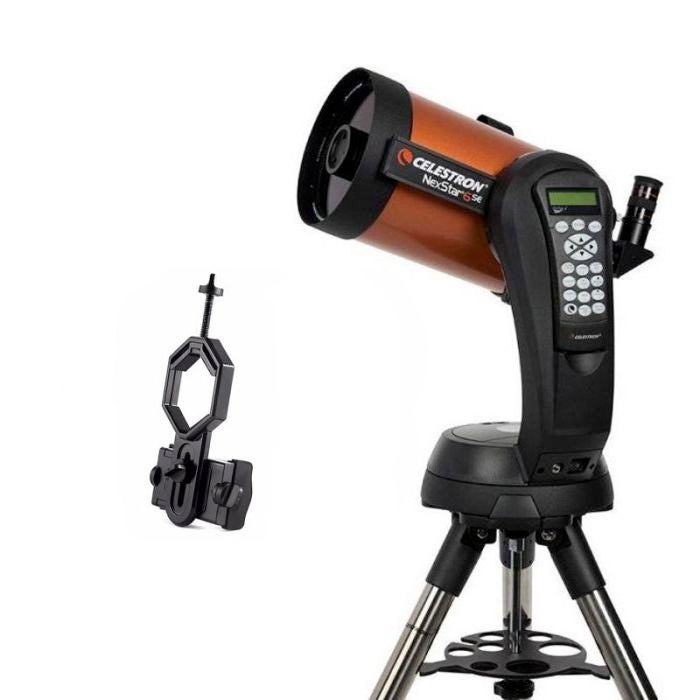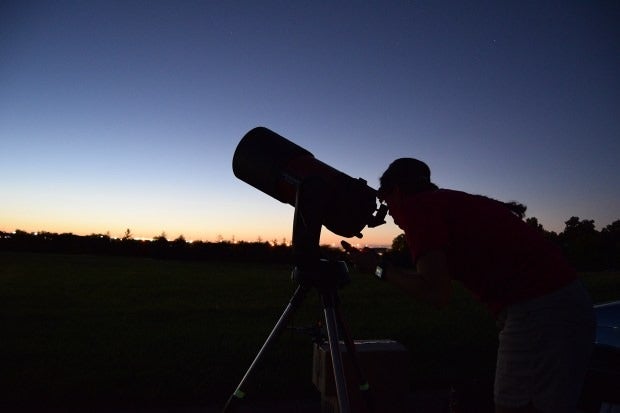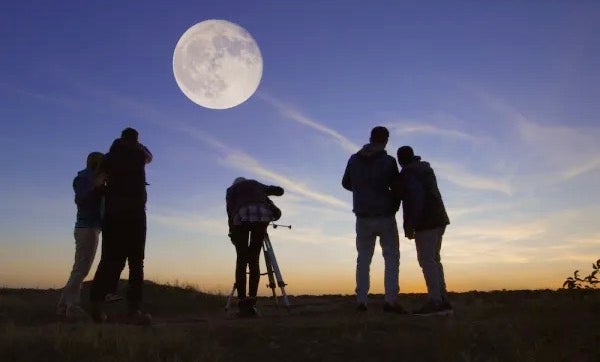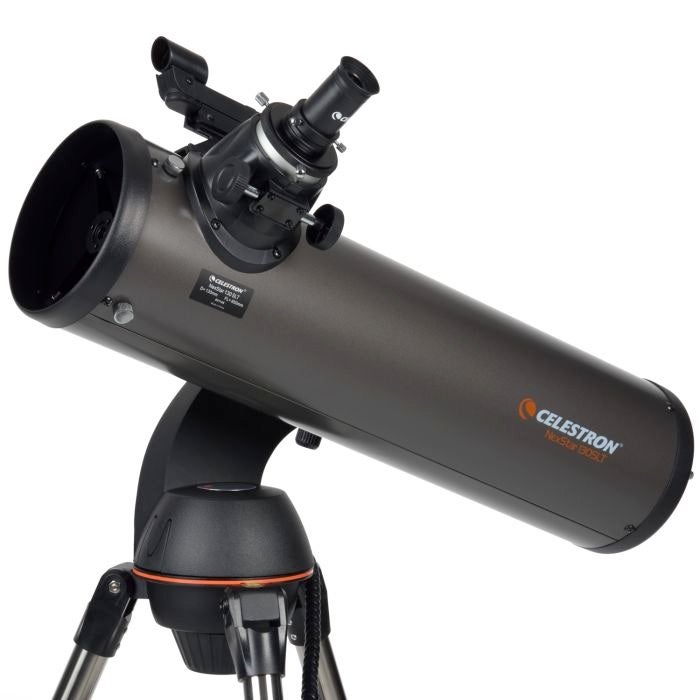I began with Rigel. This 0.1 magnitude blue giant was a dazzling sight in the little scope. That’s especially true at a magnification of 117x, where it flickered like a diamond under somewhat turbulent skies. I used this high magnification (around the upper limit for a 60mm scope) in a vain attempt to see Rigel’s 7th-magnitude companion, located about 10″ away. Theoretically, a 60mm refractor should be able to split double stars as close as 1.9″, but that’s only if the component stars are relatively bright and similar in magnitude. Rigel’s companion is 400 times fainter, so it’s easily lost in the bright star’s glare. I chose to save Rigel and its partner for a night with a steadier atmosphere.
Next up was the red supergiant Betelgeuse. The color contrast between ruddy Betelgeuse and blue-white Rigel was striking. If Rigel was a diamond, Betelgeuse was sparkling like a yellow-orange topaz. Betelgeuse wasn’t alone, either. Just 20′ to its south stood the pretty double star Struve 817 (magnitudes 8.7 and 8.9, separation 18.6″). This delicate little duo humbly shining next to brash Betelgeuse was a captivating sight!
Looking for more doubles, I moved to Mintaka (Delta [δ] Orionis), the most westerly of Orion’s Belt stars. This 2nd-magnitude blue giant is accompanied by a much fainter partner (magnitude 6.8, to be exact). Fortunately, the lesser star is 56″ away. Both were well seen at 70x.
A degree southwest of Alnitak (Zeta [ζ] Orionis), the easternmost Belt star, is the multiple star Sigma (σ) Orionis. In the 60mm refractor at 117x, Sigma was a triple: the 4th magnitude primary accompanied by two 6th-magnitude stars on one side separated from the main star by 13″ and 42″. I then pointed my scope north to Lambda (λ) Orionis, brightest of the triangle of stars that forms Orion’s head. This eye-pleasing duo (magnitudes 3.5 and 5.5, separation 4.3″) was split with 117x.
Turning to deep-sky objects, I made my way northeast towards Xi (ξ) and Nu (ν) Orionis, and the nearby open cluster NGC 2169, sometimes called the 37 Cluster. NGC 2169 is comprised of two stellar groups — each forming one of the numbers. Just 7′ in apparent diameter and comprised of a little more than a dozen stars, the 37 Cluster was best seen at 117x. Unfortunately, my scope was equipped with a standard star diagonal, which produced a mirror image of the 37.
From NGC 2169, I moved past Betelgeuse and traveled an equal distance beyond to the reflection nebula, M78. Similar in size to NGC 2169 and just 8th magnitude, it required a patient, minutes-long search with low magnification (23x) before a rather faint puffball appeared in the field. I tried higher magnifications, but 70x seemed to offer the best view.
I completed my journey at Orion’s Sword and the constellation’s pièce de résistance: the Orion Nebula (M42/43). A magnification of 23x brought the entire Sword into view, from the loose open star cluster NGC 1981 near the north end down to Iota (ι) Orionis and the wide double star Struve 747 near the south. Since Iota is double and too close for a low-power split (the magnitude 7.7 companion is 12.5″ from the magnitude 2.8 main star), I quickly switched to 117x for a clean split.
The Orion Nebula was a magnificent sight in the little refractor, especially at 70x — a magnification that captured the expanse of the nebula while still resolving the four brightest members of its embedded multiple star Theta1 (θ¹), the Trapezium. It would take an entire column to do justice to this region, as it’s one of the finest deep-sky targets in the entire sky. (In fact, I did that in my February 2019 column, “Experience the Orion Nebula.”)
And although everything described in this article can be viewed through large-aperture instruments, there’s a sense of accomplishment that comes with snagging a good look through a modest instrument like a 60mm refractor. So, if you own one, take it out for a night under the Orion sky.
Questions, comments, or suggestions? Email me at gchaple@hotmail.com. Next month: more observer’s lists. Clear skies!

